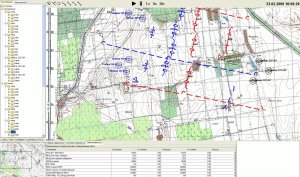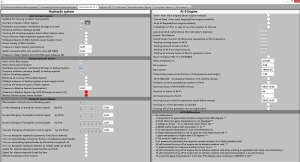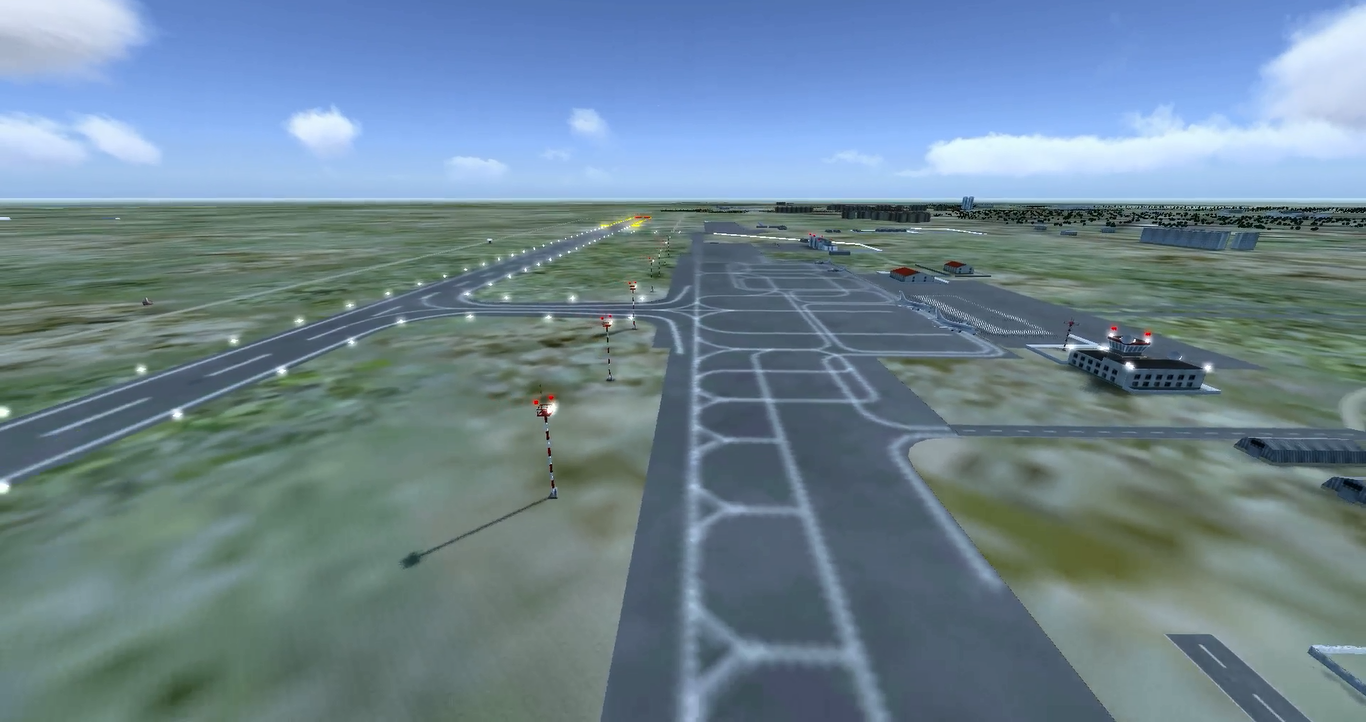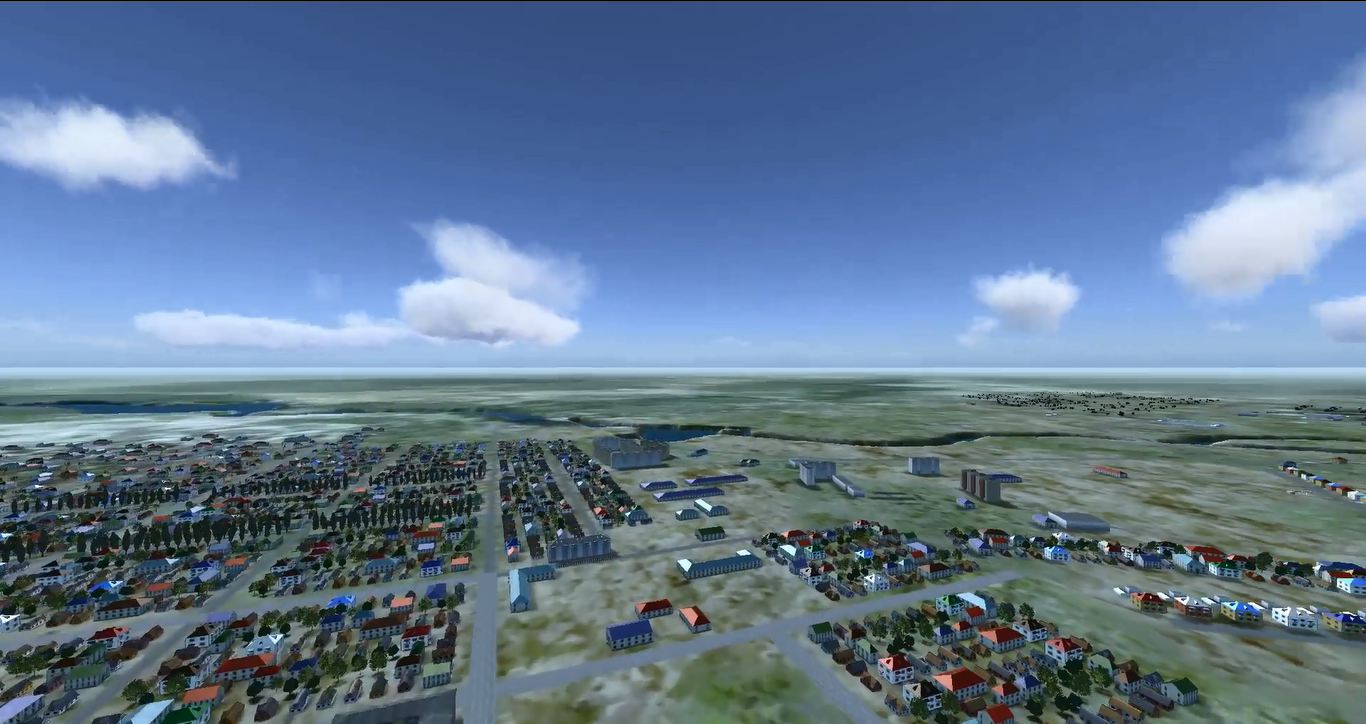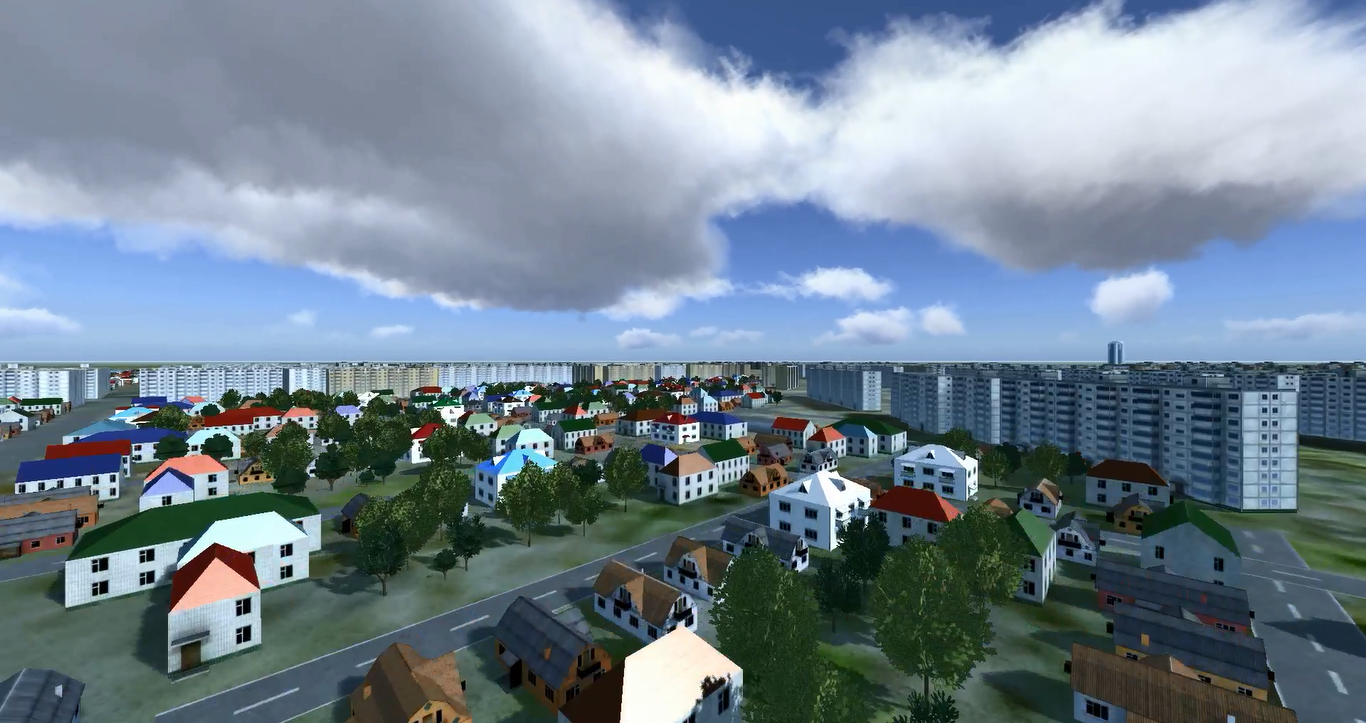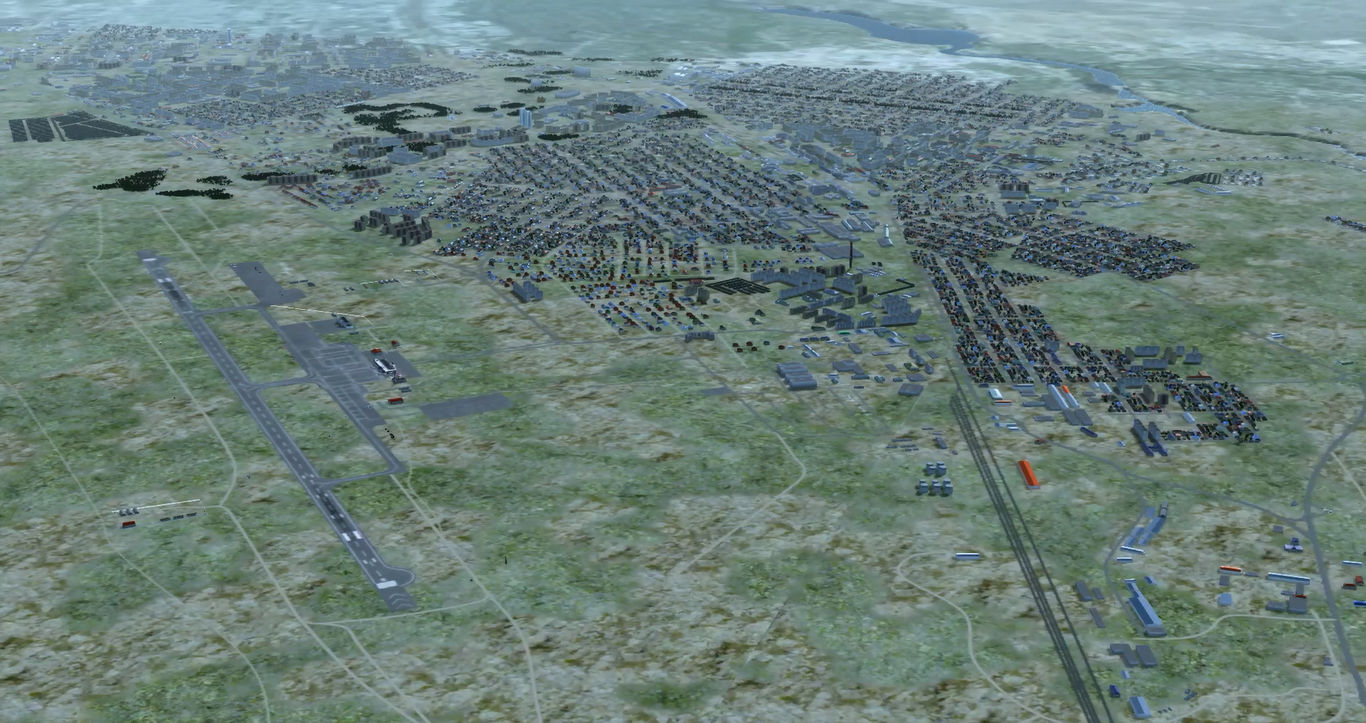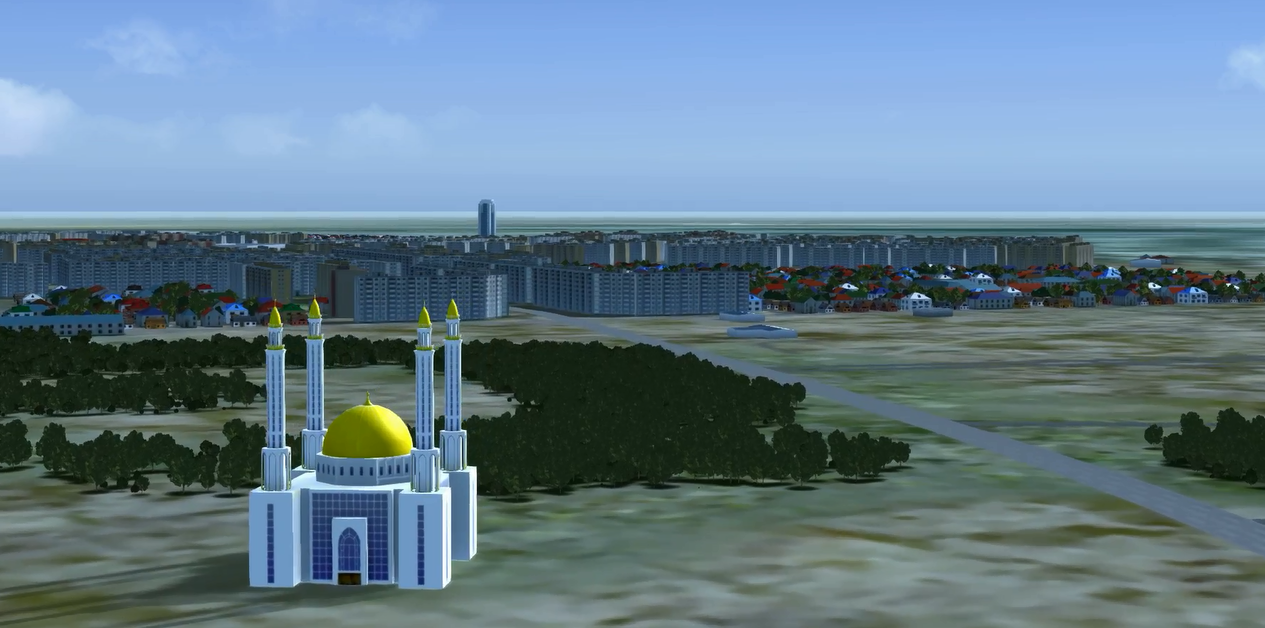Computer Based Trainings / Training Procedure Devices
Here you can see flight of helicopter. So, gamepads are used here to control the flight, and helicopter devices are visualized on 2D view. But this code also is using with motion platform and hardware controls interactions
As we have expertise in production of FMS simulators we also can develop Computer Based Trainings or software for Training Procedure Devices for cost effective trainings. Under Training Procedure Devices we mean a simplified (in comparison with FMS) computer appliance with or without cockpits or motion platforms for crew members to practice flight procedures. So, we can make less expensive training solutions based on low-fidelity hardware but still with high-fidelity software.
For flight procedure trainers we can develop, for example, a non-board devices trainer which truly models on-board systems behaviour. Please, refer to section On-Board services for more details about our experience in development of such modules.
We can also develop a low cost flight trainer with computer display that has an adequate aero-dynamic model. Please, refer to section aerodynamic. Besides we can use our AI to simulate own and alien units for adjustment of trainee’s skills.
You can leverage all high-fidelity software possibilities of Full Mission Simulators in Computer Based Trainings / Training Procedure Devices and we can develop it for our clients.
Key advantages:
- Cost effective solutions
- Software emulation of all the hardware
- Low-fidelity hardware but still high-fidelity software
- HLA based network simulators
- Shared HLA environment with FMS simulators
- Used by instructors for playing up to trainees
- 2D and 3D visualization of emulated hardware
- Huge amount of simultaneously operated simulators
- Easy extendable solutions
Examples of our development possibilities:
Advanced simulation
- Real-time simulation for complex trainings of operating different machines or processes
- Development of driving and military ground machines simulators

Advanced flight simulation development
- Development of flight simulator software for teaching procedural and flight operations (turning on, driving, takeoff, landing, flight operating, manoeuvring, technical failures operating, firing, bombing, etc)
- Simulation of flight dynamics using physics principles, strong mathematical modelling, including aerodynamic modelling based on aircraft parameters. We have subject-matter experts for projecting and implementing such tasks.
- Modelling of atmospheric effects, weather, time-of-day and season conditions to train pilots to operate in different conditions (for example, such parameters as wind, temperature, turbulence, density, humidity, flying on low altitudes affect the aerodynamics of a flight; rain, snow, fog, clouds, sun shine, time-of-day light visual effects are modeled to train crew to operate in different visual conditions)
Here you can see editor of flight trajectories for computer-in-the-loop aircrafts. Instructor prepares way points with heights, coordinates, speed of aircraft etc. AI calculates trajectory depending on parameters of aircrafts, distance to ground etc.
Staff Officer Tactical Trainers, Command & Control Simulators development
Development of Staff Officer Tactical Trainers, Command & Control Simulators: planning mode, what-if analysis of tactical decisions, on-map drawings, support of different military branches etc.
Here you can see in 3D attack of mechanized infantry as part of tactical simulator for officer’s staff. This formation is led by Artificial Intelligence that is part of our Virtual Reality solutions.
Here you can see visualization of formation fight. Blue forces has the orders to attack, red forces – to defense. You can see giving real time orders for blue forces to attack with moving into position and you can see an order for red forces to march to new positions.
Under the map there is virtual world where each unit is modelled simultaneously and it acts due to mission tasks led by artificial intelligence.
Here you can see AI logic that is used for infantry behavior modelling. Infantry try to reach the mission task: attack. So, they run перебежками, and laying down after few steps, to be less targattable for enemy units. They try to optimize the ammunition as it is limited and shoot only when target is in shooting range and can be damaged by current weapon and ammunition type. When there is a hill slope, soldier don’t lay down in the grass, but sitting on his knee.
Network & Interoperability
- Network interactions with other simulators or simulator parts using HLA 2010 Evolved protocol to train aircrew or for training of formation flights and execution of formation combat missions. Support of integration with other simulators for performing military cross-branches trainings with different types of simulators.
- Support of HLA integration with air traffic control simulation to teach pilots and dispatchers (or air control officers) to work together.

Instructor operating development
- Instructor operating stations development where an instructor can monitor flight and mission tasks operating, state of on-board devices, environment in 3D and on the maps, introduce device malfunctions, etc. Also monitoring soft for a media classroom showing the current training in different views. Multi monitor workstations are used for providing such information.
- Recording of all distributed activities during simulation for debriefing and after-action review across distributed environment with the possibility to replay the simulation from any point. Action controls for starting, pausing or stopping the simulations.
- Development of mission and environment editors for the preparation of different training. Modelling of airport facilities and environment to teach pilots to operate with them.
Displaying current modelling parameters.
This window displays states of Hydraulic and AI-9 Engine on-board systems at Instructor Operating Station. Also using this window instructor can introduce on-board systems malfunctions.
Here you can see modelling of flight of airplane and helicopter due to their mission tasks and flight dynamics that is calculated due to mission points.
Hardware simulation
- Simulation of on-board systems based on electrotechnical schemes. Our electro-technical engineers can describe an on-board devices model, and implement it with our developers. We can implement inner logic, interactions with hardware devices, visualization of devices on Instructor Operating Stations we can implement for a trainee to be able to study working with on-board systems effectively.
This 2D and 3D views for Instructor Operating Stations displays current states of in-cockpit controls and goggles.
Work of on-board systems on 2D view.
Geospatial development
Geospatial related development: using a map for dynamic air and ground environment visualization, for editing environment etc.
Here you can see editor of flight trajectories for computer-in-the-loop aircrafts. Instructor prepares way points with heights, coordinates, speed of aircraft etc. AI calculates trajectory depending on parameters of aircrafts, distance to ground etc.
3D, terrain, AI and synthetic environments
- Realistic modelling of a real-world terrain area with automatic approach, using elevation data, digital vector maps, terrain imagery and 3D models typical for region or automatic terrain generation according to the customer’s needs
- Rich 3D visualization development of huge terrain areas in hundreds of thousands of square kilometers with correspondence of this area to the real world (same elevation, land types, objects etc)
- Virtual world and AI simulation development. Distributed algorithm that calculates movements and actions of all the units according to the tasks of mission editor and their parameters. AI simulates complex patterns like decision making, aim selection, shooting etc. We take into account lots of parameters when developing a virtual world: parameters of each ground or air units (configurable into editors), relief, land types, movement capabilities etc.True physics and ballistic principles are used in the simulation core. nVidia PhysX is used for high-performance of physics-related operations
Here is the airdrome 3D environment for pilots can study to taxing, takeoff and landing using visual approach.
Here you can see relief of terrain that is used in model. This relief is taken from SRTM elevation data and corresponds to terrain in this region.
Here you can see city blocks automatically generated from digital vector map data using typical for this region 3D models. Roads are automatically generated too due to digital vector map.
Here you can see restoration of one of real-world city using digital vector maps, terrain imagery, 3D models library and SRTM elevation map. You can see a roads, river in the top-right, city blocks and bush / tree areas that are generated automatically from correspondent vector map. Airport environment in bottom left was added manually.
Cultural objects are added to map using 3D models developed by our team.
For example, you can see relief tied to vector map. When you move mouse over the map, current geographical coordinates and elevation under the mouse is displayed. As elevation of water object is the same you can see elevation doesn’t change when you move mouse over the map. Note, all geographic coordinates are changed for demo purpose and don’t correspond to real world coordinates
Here you can see AI logic that is used for infantry behavior modelling. Infantry try to reach the mission task: attack. So, they move by bounds, and laying down after few steps, to be less targattable for enemy units. They try to optimize the ammunition as it is limited and shoot only when target is in shooting range and can be damaged by current weapon and ammunition type. When there is a hill slope, soldier don’t lay down in the grass, but sitting on his knee.
Air traffic related simulation
Here is the airdrome 3D environment for pilots can study to taxing, takeoff and landing using visual approach.
- Virtual air traffic modelling using flight dynamic principles and with terrain following
- Modelling of airport related environment
- Radar work simulation with visibility zone calculation, azimuth grid and radar scan sweeps
Here you can see configuration of airport environment, such as runway, radio equipment, traffic pattern etc. Each unit can be configured using their own parameters that are taken into account during simulation.
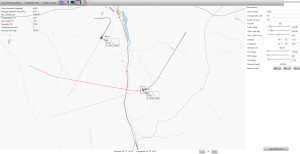
Here you can see modelling of flight of airplane and helicopter due to their mission tasks and flight dynamics that is calculated due to mission points.


